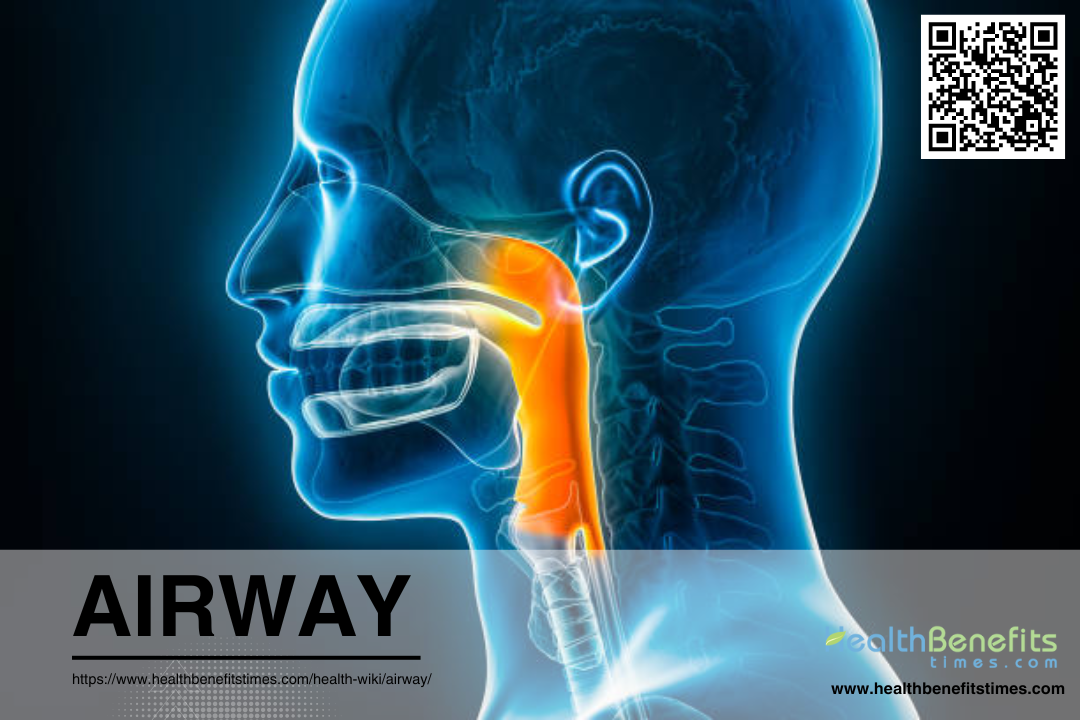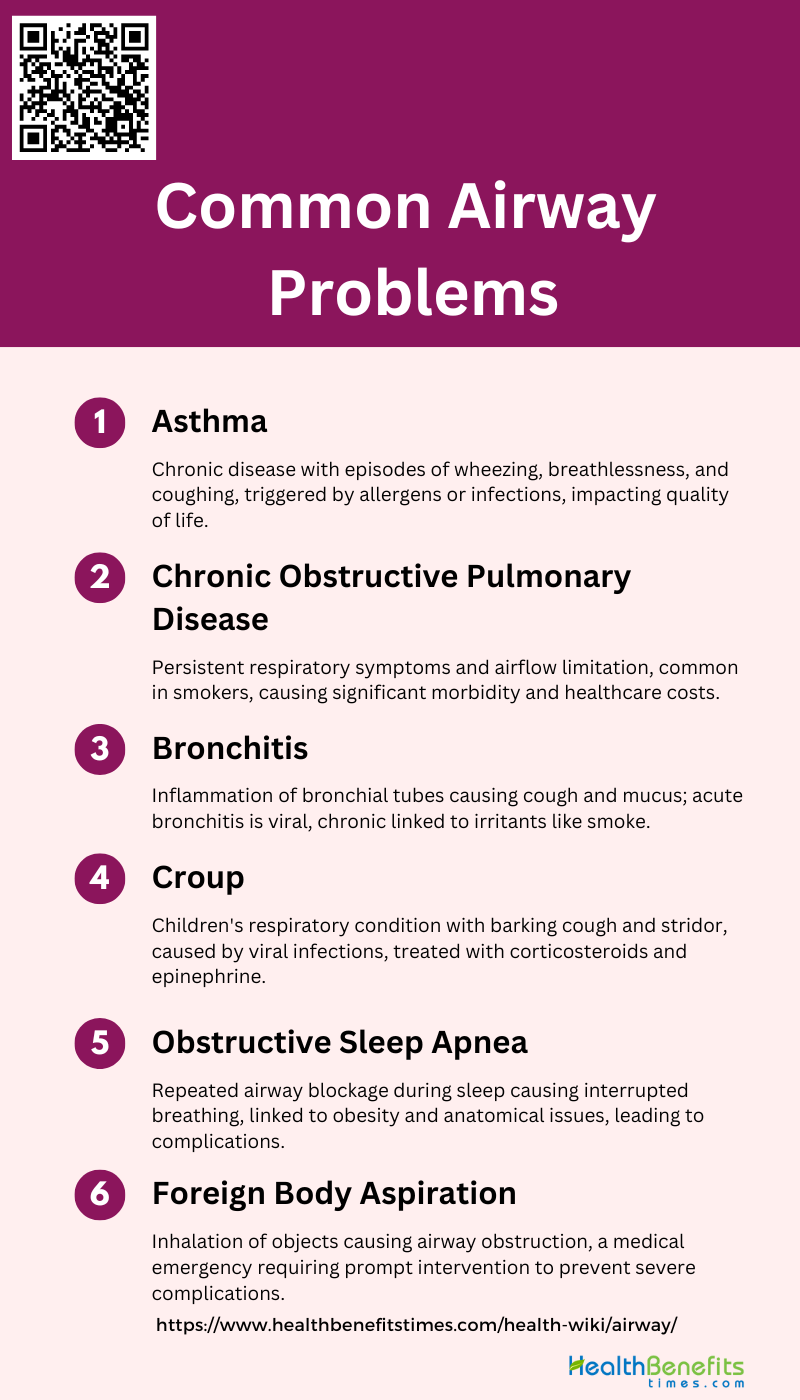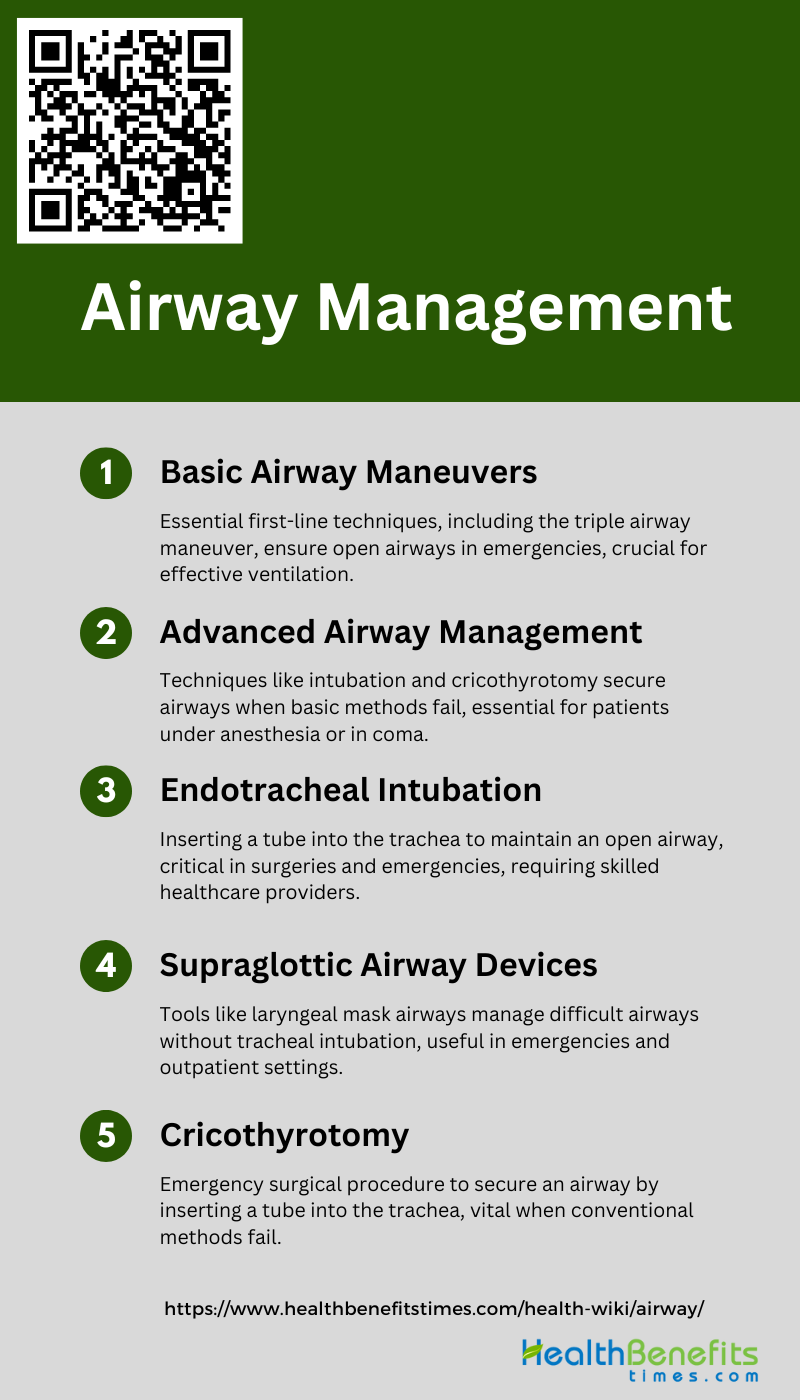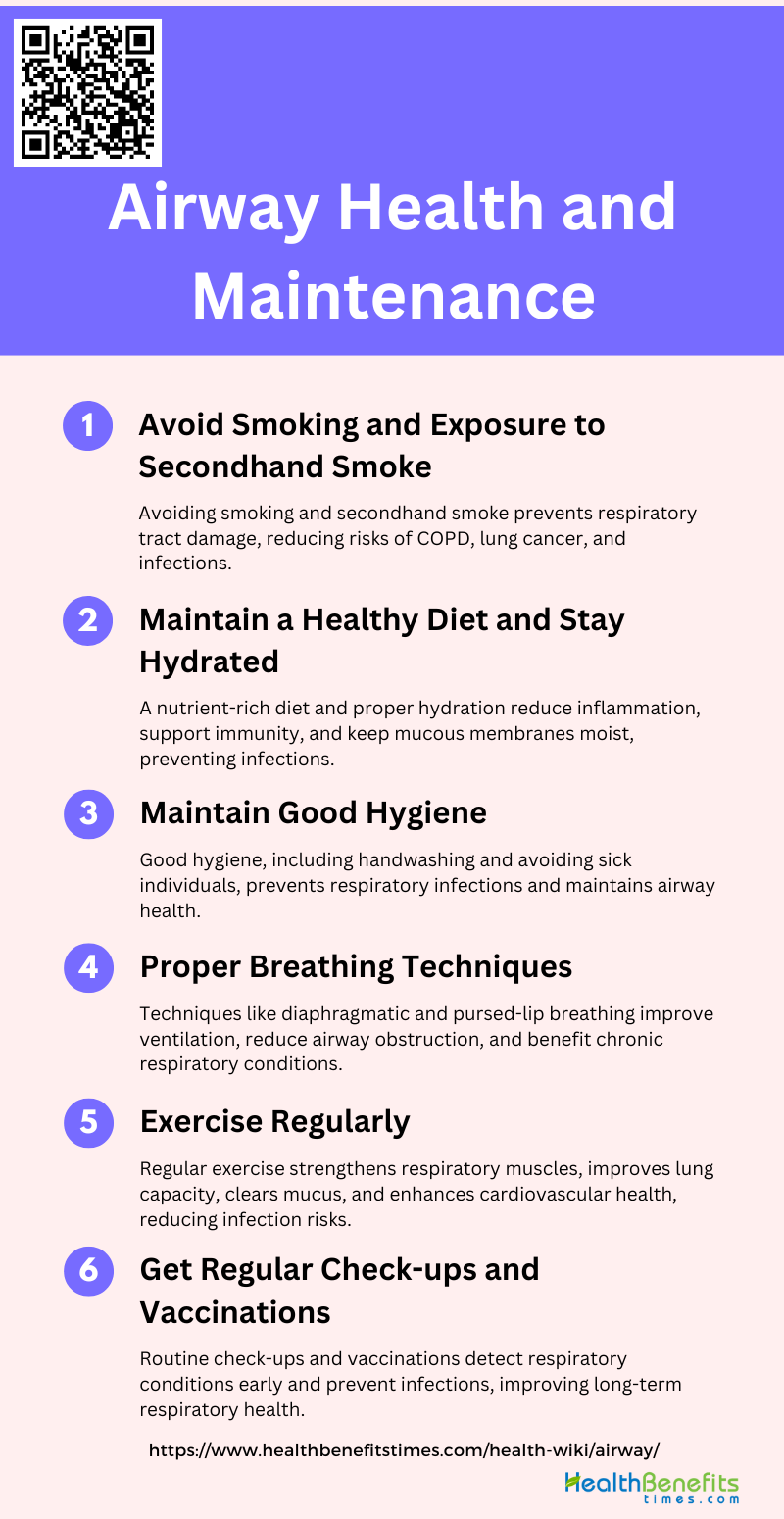 An airway refers to the passage through which air travels from the nose and mouth to the lungs, encompassing structures such as the pharynx, larynx, trachea, bronchi, and bronchioles. This system is crucial for respiration, allowing for the exchange of oxygen and carbon dioxide. In aviation, an airway is a designated route in the sky that aircraft follow, often equipped with radio navigation aids to ensure safe and efficient travel. Both definitions highlight the importance of airways in facilitating essential functions, whether in human physiology or air traffic management.
An airway refers to the passage through which air travels from the nose and mouth to the lungs, encompassing structures such as the pharynx, larynx, trachea, bronchi, and bronchioles. This system is crucial for respiration, allowing for the exchange of oxygen and carbon dioxide. In aviation, an airway is a designated route in the sky that aircraft follow, often equipped with radio navigation aids to ensure safe and efficient travel. Both definitions highlight the importance of airways in facilitating essential functions, whether in human physiology or air traffic management.
Anatomy of the Airway
Below are the key components that make up the anatomy of the airway.
1. Upper Airway Components
The upper airway consists of several key anatomical structures, including the pharynx, nasal cavities, and, functionally, the larynx and trachea. The nose, a pyramidal structure composed of bone and cartilage, is divided by a midline septum into two nasal cavities, functioning as a heater, humidifier, and voice resonator, and housing olfactory receptors. The pharynx, a U-shaped fibromuscular tube, extends from the base of the skull to the cricoid cartilage and is divided into the nasopharynx, oropharynx, and laryngopharynx. The larynx, composed of cartilages and fibroelastic membranes, acts as a protective valve mechanism and is involved in respiration, phonation, and protection against aspiration during swallowing. The upper airway’s geometry and caliber can vary significantly, especially in conditions like obstructive sleep apnea, where the airway is often narrowed laterally.
2. Lower Airway Components
The lower airway begins at the trachea, which extends from the lower edge of the cricoid cartilage to the carina, where it bifurcates into the mainstem bronchi. The trachea is supported by U-shaped cartilaginous rings and closed posteriorly by the trachealis muscle, ensuring structural integrity and flexibility. The mainstem bronchi further divide into smaller bronchi and bronchioles, leading to the alveoli where gas exchange occurs. The lower airway’s primary function is to conduct air to the lungs while filtering, humidifying, and warming it. Anatomical and functional changes in the lower airway can significantly impact respiratory efficiency and are crucial in understanding various respiratory pathologies. The lower airway’s structure and function are essential for maintaining effective ventilation and protecting the respiratory system from foreign particles and pathogens.
Common Airway Problems
Below is a list of common airway problems that are frequently encountered in clinical practice.
1. Asthma
Asthma is a prevalent chronic airway disease characterized by episodes of wheezing, breathlessness, chest tightness, and coughing. It is often triggered by allergens, respiratory infections, or environmental factors. Asthma exacerbations can significantly impact quality of life and healthcare costs, with viral infections being a major cause of these exacerbations.
2. Chronic Obstructive Pulmonary Disease (COPD)
Chronic Obstructive Pulmonary Disease (COPD) is a common respiratory disorder, particularly among smokers, affecting an estimated 16 million Americans. It is characterized by persistent respiratory symptoms and airflow limitation. COPD exacerbations, often triggered by viral infections, contribute to significant morbidity and healthcare costs.
3. Bronchitis
Bronchitis involves inflammation of the bronchial tubes, leading to persistent cough and mucus production. It can be acute or chronic, with chronic bronchitis often being a component of COPD. Viral infections are a common cause of acute bronchitis, while chronic bronchitis is frequently associated with long-term exposure to irritants like tobacco smoke.
4. Croup
Croup is a respiratory condition commonly seen in children, characterized by a distinctive barking cough, hoarseness, and stridor. It is usually caused by viral infections, leading to inflammation and swelling of the upper airway. Treatment often involves corticosteroids and nebulized epinephrine to reduce airway inflammation and improve breathing.
5. Obstructive Sleep Apnea
Obstructive Sleep Apnea (OSA) is a condition where the airway repeatedly becomes blocked during sleep, leading to interrupted breathing and poor sleep quality. It is associated with obesity, anatomical abnormalities, and other risk factors. OSA can lead to significant cardiovascular and metabolic complications if left untreated.
6. Foreign Body Aspiration
Foreign body aspiration occurs when an object is inhaled into the respiratory tract, causing partial or complete airway obstruction. It is a medical emergency that requires prompt diagnosis and intervention to prevent severe complications. Symptoms may include coughing, wheezing, and respiratory distress.
Airway Management
Airway management is a critical skill in medical practice, essential for ensuring patient safety and effective ventilation. It encompasses a range of techniques and devices designed to keep the airway clear and open during anesthesia, emergency situations, or in patients with compromised breathing. Here are key points to consider in airway management:
1. Basic Airway Maneuvers
Basic airway maneuvers are essential first-line techniques used to ensure an open airway in patients experiencing respiratory distress. These maneuvers include the triple airway maneuver, which involves the backward tilt of the head, forward displacement of the mandible, and separation of the lips and teeth. These techniques are crucial for providing effective ventilation, especially in emergency situations where advanced equipment may not be immediately available. Additionally, direct mouth-to-mouth and mouth-to-nose ventilation remain vital skills that should be taught to the public to ensure immediate response capabilities in emergencies.
2. Advanced Airway Management
Advanced airway management encompasses a range of techniques and devices designed to secure the airway when basic maneuvers are insufficient. This includes the use of advanced airway control measures such as pharyngeal intubation, difficult tracheal intubation, cricothyrotomy, and transtracheal jet ventilation. These methods are particularly important for patients in coma or under anesthesia who present with airway obstructions that resist basic control measures. The development and mastery of these advanced techniques are crucial for both elective and emergency airway management scenarios, necessitating ongoing education and the development of new devices and training systems.
3. Endotracheal Intubation
Endotracheal intubation is a critical procedure in airway management, involving the insertion of a tube through the mouth or nose into the trachea to maintain an open airway. This technique is often employed in patients who are unable to breathe on their own or are under general anesthesia. It is a standard procedure in both elective surgeries and emergency situations. The success of endotracheal intubation depends on the skill and experience of the healthcare provider, as well as the availability of appropriate equipment and training. Continuous advancements in intubation techniques and devices are essential to improve patient outcomes.
4. Supraglottic Airway Devices
Supraglottic airway devices, such as the laryngeal mask airway (LMA), are advanced tools used to manage difficult airways and facilitate ventilation. These devices are designed to sit above the vocal cords, providing a secure airway without the need for tracheal intubation. Supraglottic airways are particularly useful in outpatient settings and emergency situations where rapid airway management is required. They offer an effective alternative to traditional intubation, reducing the risk of airway trauma and complications. The evolution and utilization of these devices have significantly enhanced the ability to manage difficult airways efficiently.
5. Cricothyrotomy
Cricothyrotomy is an emergency surgical procedure performed to secure an airway when other methods, such as intubation, have failed or are not feasible. This procedure involves making an incision through the skin and cricothyroid membrane to insert a tube directly into the trachea. Cricothyrotomy is a life-saving intervention in situations of severe airway obstruction or trauma. It provides a rapid and reliable means of ensuring ventilation and oxygenation when conventional methods are inadequate. Mastery of this technique is essential for healthcare providers, particularly in emergency and critical care settings.
Airway Health and Maintenance
Proper maintenance of the respiratory system can prevent complications and enhance quality of life. Below is a list of strategies to ensure optimal airway health.
1. Avoid smoking and exposure to secondhand smoke
Avoiding smoking and exposure to secondhand smoke is crucial for maintaining airway health. Smoking introduces harmful chemicals that can damage the respiratory tract, leading to chronic conditions such as chronic obstructive pulmonary disease (COPD) and lung cancer. Secondhand smoke exposure can also cause similar health issues, particularly in children and non-smokers. Studies have shown that smoking cessation and avoiding secondhand smoke can significantly reduce the risk of respiratory infections and improve overall lung function.
2. Maintain a Healthy Diet and Stay Hydrated
A healthy diet and proper hydration are essential for maintaining airway health. Nutrient-rich foods, particularly those high in antioxidants, can help reduce inflammation and support the immune system. Hydration is equally important as it helps keep the mucous membranes in the respiratory tract moist, facilitating the clearance of mucus and reducing the risk of infections. Proper nutrition and hydration have been linked to better respiratory outcomes and reduced incidence of airway-related complications.
3. Maintain Good Hygiene
Good hygiene practices are vital for preventing respiratory infections and maintaining airway health. Regular handwashing, avoiding close contact with sick individuals, and keeping the living environment clean can significantly reduce the risk of infections. In clinical settings, maintaining airway hygiene through methods such as tracheal suctioning and bronchoscopy has been shown to decrease the incidence of hospital-acquired respiratory infections and improve patient outcomes.
4. Proper Breathing Techniques
Proper breathing techniques can enhance airway health by improving ventilation and reducing the risk of airway obstruction. Techniques such as diaphragmatic breathing and pursed-lip breathing can help maintain open airways and improve oxygenation. These techniques are particularly beneficial for individuals with chronic respiratory conditions, as they can help manage symptoms and improve overall lung function.
5. Exercise regularly
Regular exercise is beneficial for maintaining airway health as it strengthens the respiratory muscles, improves lung capacity, and enhances overall cardiovascular health. Physical activity can also help clear mucus from the airways, reducing the risk of infections. Exercise has been shown to improve respiratory function and reduce the severity of symptoms in individuals with chronic respiratory conditions.
6. Get Regular Check-ups and Vaccinations
Regular medical check-ups and vaccinations are essential for maintaining airway health. Routine check-ups can help detect and manage respiratory conditions early, while vaccinations can prevent infections such as influenza and pneumonia that can compromise airway health. Studies have highlighted the importance of regular medical evaluations and immunizations in reducing the incidence of respiratory infections and improving long-term respiratory outcomes.




